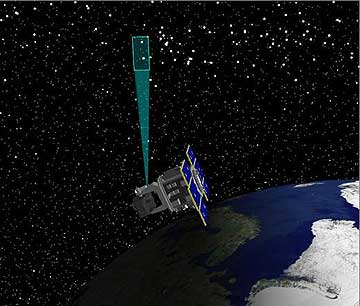
SBSS Observing Resident Space Objects in Deep Space
Recently, the Air Force transferred Satellite Control Authority of the SBSS Block 10 satellite to the 1st Space Operations Squadron, 50th Operations Group at Schriever AFB, Colorado. This important milestone reflects more than seven years of effort and cooperation between the Space and Missile Systems Center, Air Force Space Command, U.S. Strategic Command's Joint Functional Component Command for Space, The Boeing Company, and Ball Aerospace & Technologies Corp.
As a taskable dedicated sensor within the nation's Space Surveillance Network, SBSS performs space surveillance operations in support of U.S. Strategic Command. Block 10 is the only space-based sensor in the network, operating 24-hours a day, 7- days a week collecting metric and Space Object Identification data for man-made resident space objects without the disruption of weather, time of day and atmosphere that can limit ground-based systems. This improved access to observe RSOs significantly enhances the ability to provide timely, critical information so desperately needed in today's contested, congested and competitive space environment. Providing improved detection timeliness assists the Joint Space Operations Center with maintaining an accurate knowledge of RSO orbital positions, tracking new objects and debris, and reducing the number of uncorrelated targets currently in the space catalog.
SBSS Block 10 was launched aboard an Orbital Sciences Minotaur IV rocket from Vandenberg AFB, California, September 25, 2010. The first signals from the advanced space surveillance satellite were received a short time later at the Satellite Operations Center at Schriever.
SBSS has a 500-pound optical camera mounted on an electronically movable gimbal.
"It's an agile sensor so it can be tasked to look at high-interest objects on a more frequent basis," said Col. Stephen Butler, Air Force Space Command's chief of Space Situational Awareness and Command & Control.
"Having a space-based component means that if you need observation on a satellite that's out there, you can get it any time, regardless of day, night or weather," said Col. Steve Smith, chief of the Advanced Systems Division in SMC's Space Superiority Systems Directorate.
After healthy satellite delivery to orbit, the SBSS development team immediately began a comprehensive and carefully controlled five month on-orbit initialization, checkout, calibration and system characterization process. SCA transfer represents a successful culmination of these on-orbit checkout processes and puts the SBSS Block 10 on a solid path to achieving Initial Operational Capability.

